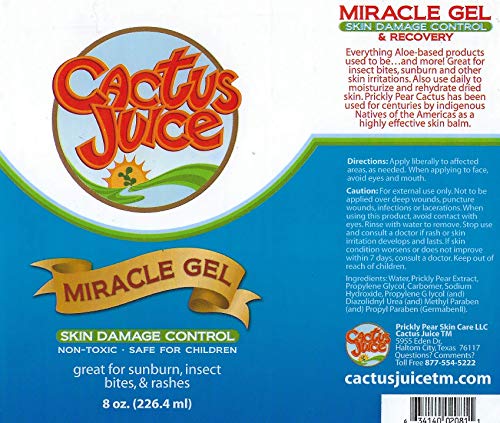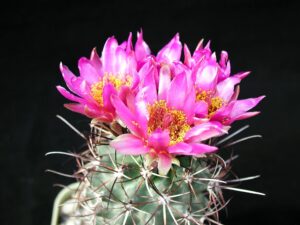Cacti have long been revered not only for their astounding adaptability in arid environments but also for the beneficial properties extracted from their succulent tissues. Among the myriad of cactus-derived products, cactus juice stands out because of its purported efficacy in repelling pests, particularly the notorious yellow flies. This article endeavors to dissect the claims surrounding cactus juice as a remedy against yellow flies, exploring both the scientific angle and folklore to uncover whether it is indeed a “myth or miracle.”
The allure of using natural remedies has surged in contemporary society, prompting individuals to seek alternatives to chemical insecticides. Cactus juice, commonly derived from species such as the prickly pear or saguaro, has been touted as a potential solution. However, the veracity of these claims often operates in a nebulous zone between anecdotal evidence and scientifically substantiated findings. To elucidate the topic, we will delve into the biological composition of cactus juice, its historical usage in pest management, and the mechanisms through which it may or may not influence yellow fly populations.
Understanding the Science Behind Cactus Juice
At the heart of the cactus juice phenomenon lies its unique biochemical makeup, which may contribute to its insect-repelling properties. Rich in amino acids, vitamins, and minerals, cactus juice offers an array of health benefits for both humans and the ecosystem. The juice contains high levels of antioxidants which help combat oxidative stress. Some of these antioxidants, such as flavonoids and phenolic compounds, have exhibited insecticidal or repellent properties in various studies.
Furthermore, it is crucial to examine the viscosity and texture of cactus juice, which may create a less hospitable environment for flying insects. The sticky nature of the juice could theoretically inhibit yellow flies’ ability to land and feed. However, while these attributes offer promising avenues for further exploration, the extent of efficacy in repelling yellow flies remains largely unverified. Some researchers propose that the scent of cactus juice might also play a role, potentially masking human odors that attract these pests.
The Historical Use of Cactus Juice in Pest Control
Historically, various cultures have harnessed the properties of cacti for different purposes, including natural pest management. Indigenous communities in the Americas utilized cactus juice not only for its nutritional value but also in ways to deter insects. The application of cactus juice as a repellent predates modern science, existing in the realm of tradition and oral history.
In particular, the prickly pear cactus has been celebrated for its utility among Native American tribes. These communities recognized its multifaceted benefits, applying it topically to soothe insect bites and using the juice in culinary applications. Although anecdotal accounts abound regarding its efficacy against insects such as yellow flies, contemporary scientific validation remains scant. It raises the question: do age-old practices hold any merit, or do they reside purely in the annals of folklore?
Are Cactus Juice Repellents Effective Against Yellow Flies?
The centerpiece of the discussion revolves around the efficacy of cactus juice as a repellent specifically for yellow flies. Yellow flies, known scientifically as *Hybomitra* spp., are persistent and often aggressive pests that pose challenges to outdoor activities. Unlike their more benign counterparts, these insects’ bite can result in painful welts and irritation, prompting an urgent need for effective control measures.
To date, scientific literature on the specific impact of cactus juice on yellow flies is sparse. Some exploratory studies have hinted at the potential of various natural products, including other plant-based repellents, but conclusively linking cactus juice to yellow fly deterrence requires robust empirical evidence. Entomologists and pest control professionals stress the importance of comprehensive studies that quantify such effects. Until such research surfaces, consumers must navigate the landscape of natural repellents with caution, discerning between marketing claims and substantiated findings.
The Ecological Perspective: Sustainability and Safety
An additional aspect to consider is the ecological footprint of utilizing cactus juice as an insect repellent. The growing shift toward sustainable pest control solutions has prompted an interest in plant-based alternatives, including cactus juice. Not only does this stem from a desire to avoid chemicals that can harm non-target organisms and ecosystems, but it also encourages practices that minimize environmental impact.
Cactus plants, with their remarkable ability to thrive in challenging climates, necessitate fewer resources, such as water and fertilizers, compared to conventional crops. Harnessing cactus juice as a natural remedy might contribute positively to sustainable agricultural practices, promoting a holistic approach to pest management.
In conclusion, while the anecdotal evidence surrounding cactus juice as an alternative solution to yellow flies is compelling, the current scientific consensus remains inconclusive. Ongoing exploration of its properties could reveal promising repellent capabilities; however, until comprehensive studies validate these claims, it is prudent for consumers to treat cactus juice as a supplementary measure rather than a definitive solution. Sustainable and effective pest management remains a multifaceted enterprise, requiring thorough understanding, careful application, and continuous research.





Leave a Comment